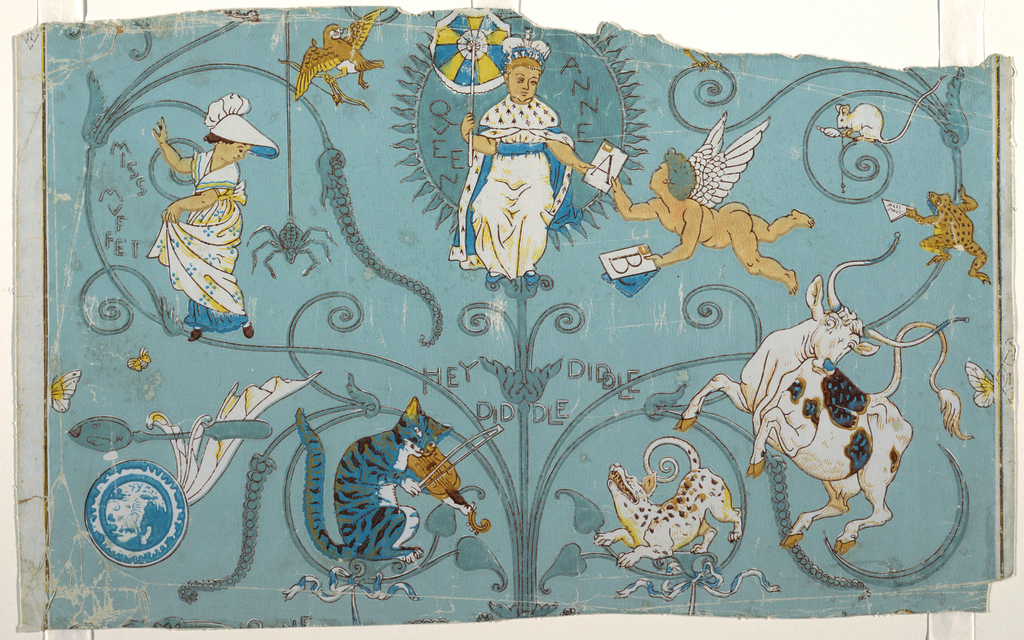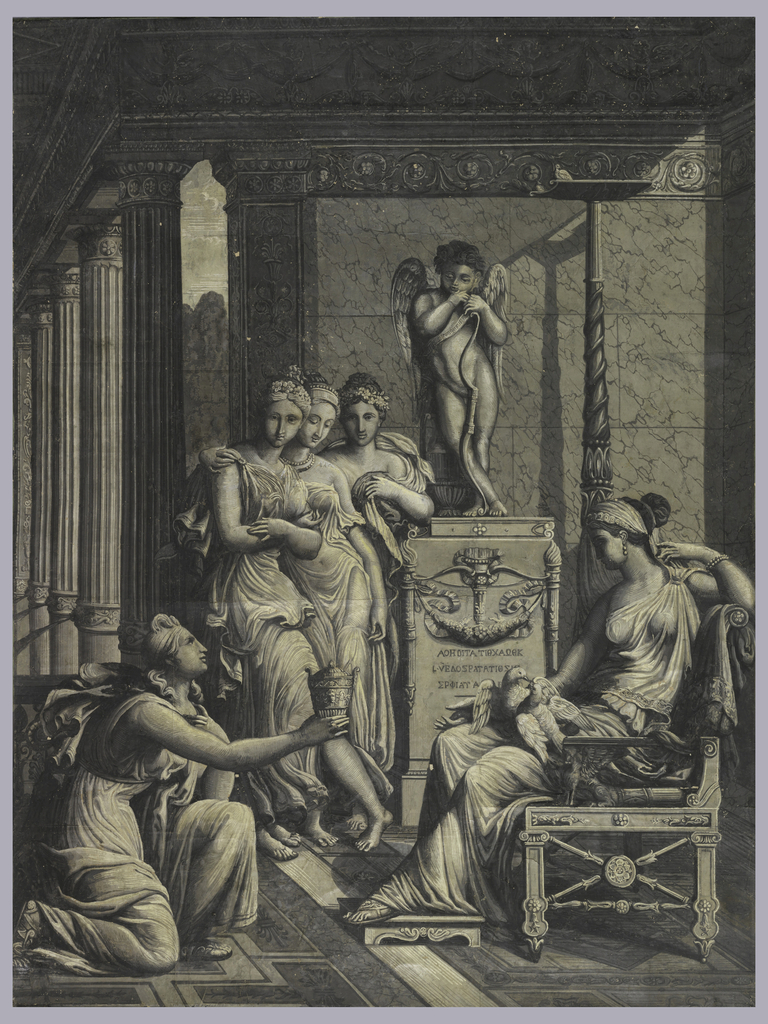This is an arabesque wallpaper design from the late eighteenth century, containing two alternating views. The top view shows a woman, possibly Venus, within an arbor seated on a cross frame stool, playfully bouncing a putto, perhaps Cupid, on her foot. A tall urn sits behind her. A tree grows off to the left, towering...
Gazing at this carefully organized menagerie surrounded by creatures of all sorts and softly, scrolling vines, this wallpaper entices our eyes to flit from scene to scene. In one section, we notice a spider looming next to a small girl and in the next a mischievous cat plays a fiddle. As this continues, we slowly...
Small enough to hold in one’s palm and ornate enough to catch the eye of a passerby, this snuffbox is a combination of exquisite craftsmanship and subtle status symbol, as such containers often were in 18th-century Europe. The box is attributed to Johann Martin Heinrici, a Swiss artisan who worked at the famed Meissen porcelain...
In celebration of Women’s History Month, Cooper Hewitt is dedicating select Object of the Day entries to works that celebrate women in our collection. We believe that this Italian Amorino Plate (also known as a coppa) dates from ca. 1600. The cupid (or putto) painted in the center of the plate, which is a shallow bowl,...
This lovely nineteenth-century panel is a testament to the Hewitt sisters’ affinity for fine French wallpapers, and perfect for those who wish everyday was St. Valentine’s Day. It was block printed on handmade paper c.1810, just a few decades before continuous roles of machine-made paper became the industry standard. The top edge of the paper...
Cooper Hewitt has a full set of the Loves of Psyche scenic wallpaper first produced in 1816. The museum’s edition was printed in the early twentieth century using the original woodblocks. This scenic paper is unique on two fronts: it is the only scenic not designed to be continuous, and it is the only scenic...
This pâte-sur-pâte glazed porcelain plaque, made by Mintons Ltd. in about 1909, reflects the humor and creativity of its designer, Marc Louis Emanuel Solon (1835-1913). Pâte-sur-pâte is a complex, time-consuming technique, which requires the designer to apply successive thin layers of liquid clay onto a tinted clay body in order to create a design. The...
Romeo and Juliet’s story is known across the world, but what about the tale that serves as the foundation for Shakespeare’s work? Ovid’s Metamorphosis tells the tale of Pyramus and Thisbe; like Romeo and Juliet, these two were young lovers forbidden to wed because of a long-standing rivalry between their families. Their love grew through...







